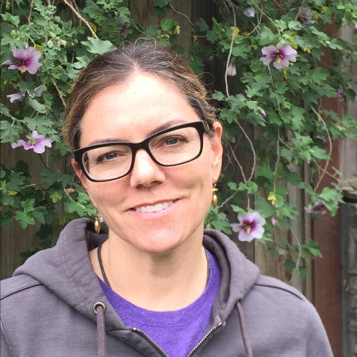
Systems Architect
Technology
kandrews@tnc.org
In The Nature Conservancy’s California Chapter, Katie applies geospatial technologies to address dynamic water management and other conservation issues. Additionally she manages the development of mobile and web-based tools to improve information access for decision makers. She has nearly 20 years of experience in geographic information systems, spatial analyses, remote sensing and GPS technology.
Before joining the Conservancy, Katie worked for the Bureau of Land Management. She has a B.A. in Environmental Studies from the University of Kansas and an M.S. in Geography from the University of Utah.
What Katie is working on now:
I’m currently working with partners on a project that pairs machine learning and remote sensing to characterize the shallow wet conditions that define great shorebird habitat. As The Nature Conservancy continues to employ dynamic strategies to ensure migrating birds have access to foraging habitat where and when they need it, the ability to monitor their habitat conditions in near real-time using remotely sensed imagery is key to our success and to scaling this work.
Ethan Inlander, Katie Andrews, Contributors: Jennifer Chin, Sue Pollock, Mike McFadden, Scott Hardage, Scott Butterfield, Tod Rubin
With this publication, TNC in California marks a major shift in its approach to conservation easement monitoring. At the crossroads of conservation, stewardship and technology lies remote property…Gregory H. Golet, Candace Low, Simon Avery, Katie Andrews, Christopher J. McColl, Rheyna Laney, Mark D. Reynolds
Migratory birds face great challenges due to the climate change, conversion of historical stopover sites, and other factors. To help address these challenges, the Conservancy launched a dynamic…Christopher J. McColl, Katie Andrews, Mark Reynolds, Gregory H. Golet
In response to the decline of wetland habitats for migrating and wintering water birds in California, the Conservancy developed a program called BirdReturns that creates “pop-up”…Katie Andrews, Megan Webb, Robin Cox
This interactive webmap takes a multimedia approach to showcase the Conservancy’s conservation legacy in Marin County, California. Eleven achievements are profiled with photographs and…Gennet, S., J. Howard, J. Langholz, K. Andrews, M.D. Reynolds, S.A. Morrison
This paper discusses the 2006 outbreak of toxic foodborne E. coli and its impact on wildlife. The authors explain how farming practices for food safety that target wildlife can damage ecosystems but…